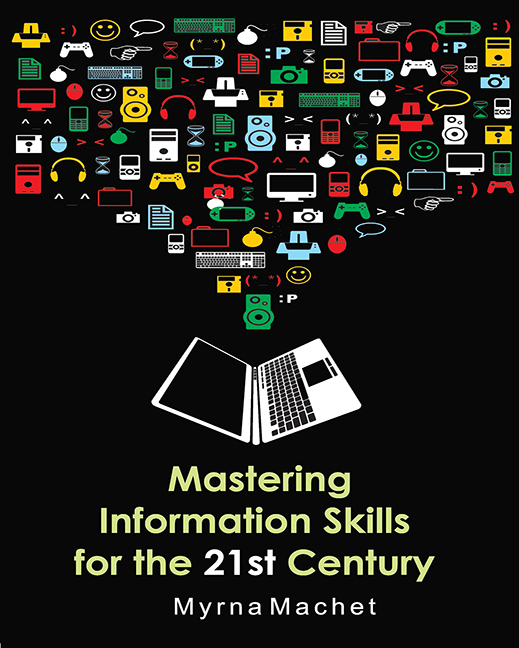Refine search
Actions for selected content:
48294 results in Computer Science
Emerging trends: Reviewing the reviewers (again)
-
- Journal:
- Natural Language Engineering / Volume 26 / Issue 2 / March 2020
- Published online by Cambridge University Press:
- 04 March 2020, pp. 245-257
-
- Article
-
- You have access
- Open access
- HTML
- Export citation
Idiomatic Patterns and Aesthetic Influence in Computer Music Languages
-
- Journal:
- Organised Sound / Volume 25 / Issue 1 / April 2020
- Published online by Cambridge University Press:
- 04 March 2020, pp. 53-63
- Print publication:
- April 2020
-
- Article
-
- You have access
- Open access
- HTML
- Export citation
Humanitarian makerspaces in crisis-affected communities
-
- Article
-
- You have access
- Open access
- HTML
- Export citation
ON INTERVAL AND INSTANT AVAILABILITY OF THE SYSTEM
-
- Journal:
- Probability in the Engineering and Informational Sciences / Volume 35 / Issue 3 / July 2021
- Published online by Cambridge University Press:
- 02 March 2020, pp. 581-594
-
- Article
- Export citation
Computing knowledge in equational extensions of subterm convergent theories
-
- Journal:
- Mathematical Structures in Computer Science / Volume 30 / Issue 6 / June 2020
- Published online by Cambridge University Press:
- 02 March 2020, pp. 683-709
-
- Article
- Export citation
ON THE RESIDUAL AND PAST LIFETIMES OF COHERENT SYSTEMS UNDER RANDOM MONITORING
-
- Journal:
- Probability in the Engineering and Informational Sciences / Volume 35 / Issue 3 / July 2021
- Published online by Cambridge University Press:
- 02 March 2020, pp. 465-480
-
- Article
- Export citation
RSL volume 13 issue 1 Cover and Back matter
-
- Journal:
- The Review of Symbolic Logic / Volume 13 / Issue 1 / March 2020
- Published online by Cambridge University Press:
- 20 March 2020, pp. b1-b2
- Print publication:
- March 2020
-
- Article
-
- You have access
- Export citation
Maximum efficiency solution for capacitive wireless power transfer with N receivers
-
- Journal:
- Wireless Power Transfer / Volume 7 / Issue 1 / March 2020
- Published online by Cambridge University Press:
- 19 March 2020, pp. 65-75
- Print publication:
- March 2020
-
- Article
- Export citation
Genetic-based optimization of a multi insulator tunneling diode for THz energy harvesting
-
- Journal:
- Wireless Power Transfer / Volume 7 / Issue 1 / March 2020
- Published online by Cambridge University Press:
- 17 March 2020, pp. 60-64
- Print publication:
- March 2020
-
- Article
- Export citation
Practical applications of universal approach for calculating maximum transfer efficiency of MIMO-WPT system
-
- Journal:
- Wireless Power Transfer / Volume 7 / Issue 1 / March 2020
- Published online by Cambridge University Press:
- 01 April 2020, pp. 86-94
- Print publication:
- March 2020
-
- Article
- Export citation
RSL volume 13 issue 1 Cover and Front matter
-
- Journal:
- The Review of Symbolic Logic / Volume 13 / Issue 1 / March 2020
- Published online by Cambridge University Press:
- 20 March 2020, pp. f1-f4
- Print publication:
- March 2020
-
- Article
-
- You have access
- Export citation

Mastering Information Skills for the 21st Century
-
- Published by:
- University of South Africa
- Published online:
- 28 February 2020
- Print publication:
- 19 July 2012
ROB volume 38 issue 4 Cover and Back matter
-
- Article
-
- You have access
- Export citation
ROB volume 38 issue 4 Cover and Front matter
-
- Article
-
- You have access
- Export citation
Harmonic distortion considerations for an integrated WPT-PLC system
-
- Journal:
- Wireless Power Transfer / Volume 7 / Issue 1 / March 2020
- Published online by Cambridge University Press:
- 28 February 2020, pp. 33-41
- Print publication:
- March 2020
-
- Article
- Export citation
Political isolation in America
-
- Journal:
- Network Science / Volume 8 / Issue 3 / September 2020
- Published online by Cambridge University Press:
- 26 February 2020, pp. 333-355
-
- Article
- Export citation
Collecting egocentric network data with visual tools: A comparative study
-
- Journal:
- Network Science / Volume 8 / Issue 2 / June 2020
- Published online by Cambridge University Press:
- 26 February 2020, pp. 223-250
-
- Article
-
- You have access
- Open access
- Export citation
Domain adaptation-based transfer learning using adversarial networks
- Part of
-
- Journal:
- The Knowledge Engineering Review / Volume 35 / 2020
- Published online by Cambridge University Press:
- 26 February 2020, e7
-
- Article
- Export citation
